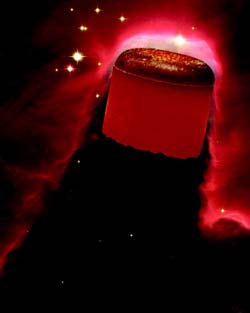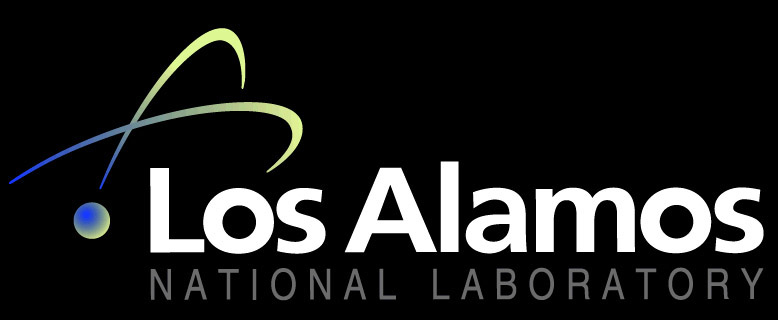Plutonium Futures - The Science 2003
2003
Conference Highlights

Several hundred people attended the third Plutonium Futures—The Science Conference, held July 6-10 in Albuquerque. The international conference, held every three years, was sponsored by Los Alamos National Laboratory in cooperation with the American Nuclear Society. The conference kicked off July 6 with an afternoon Plutonium Primer and tutorial sponsored by NMT Division’s Seaborg Institute. In the four days following the tutorial, participants presented dozens of oral sessions and posters.
Highlights
of the conference are reported below. Detailed coverage will be provided
in the 3rd Quarter 2003 issue of “Actinide Research
Quarterly.”
Spanning
the gamut of key topics in plutonium and actinide science, the stated
goal of Sunday afternoon’s opening tutorial was “to prepare students,
non-specialists, and other interested parties.” And although the four
presentations delved into details that required at least a basic aptitude
in physical science, they did indeed set a broadly landscaped stage
for the detailed stories that would be elaborated later in the conference.
Seaborg Institute Director David Clark’s opening overview painted the
broadest panorama—from actinide chemistry to plutonium metallurgy to
stockpile stewardship, nuclear fuel cycles, and environmental behavior.
Although somewhat more narrowly focused, the three subsequent talks
quite capably sustained the tutorial’s “increased awareness” theme.
The first presented an overview of International Atomic Energy Commission
activities in nonproliferation and security. The second focused—through
an international lens—on the diversity of issues in new fuel cycle
initiatives. Combining aspects of geology, chemistry, and hydrology,
the closing presentation portrayed a spectrum of initiatives in understanding
colloid-facilitated transport of plutonium through the environment.
In the end, the approximately one hundred attendees left with a distinct
sense of enhanced awareness of these important issues.
Kicked
off by the typically colorful, pertinent, and timely remarks of former
Los Alamos National Laboratory director Sig Hecker, the conference’s
opening day focused on basic actinide physics and chemistry. Against
the backdrop
of LANL’s
60th anniversary
and the European Institute for Transuranium Elements’ 40th, Hecker surveyed
the progress—or lack thereof—of international collaboration since the
Eisenhower “Atoms for Peace” Initiative. Gerry Lander’s plenary talk
played off Hecker’s remarks by highlighting the broad spectrum of European
actinide research, much of it done collaboratively with LANL and other
U.S. scientists. Other morning-session talks directly or indirectly broached
the perennial puzzle of the nature of plutonium’s 5f electrons. A plenary
presentation by LANL’s Wolfgang Runde set the stage for Monday afternoon’s
talks, which spotlighted novel techniques for studying the chemistry
of plutonium and its compounds. The day’s events were capped off by a
lively and captivating panel discussion, which despite the late hour
and long day, drew a sizable audience of participants.
The nuclear fuel cycle dominated talks on Tuesday. The
morning session opened with Vic Reis, former DOE assistant secretary
for defense programs and now with Science Applications International
Corp., who discussed President Dwight D. Eisenhower’s 1953 “Atoms for
Peace” speech before the United Nations. Reis went on to propose a
strategy for what he called “Atoms for Peace 2.” The remainder of the
morning was dedicated to technical talks that focused on the nuclear
fuel cycle, from using diamides as extracting agents to flow sheets
designed to process nuclear waste streams. The afternoon session opened
with NMT-11’s Robert W. Margevicius’s overview of nuclear fabrication
efforts taking place at Los Alamos. Other talks focused on the good
and bad characteristics of nuclear power and self-irradiation effects
in plutonium-bearing glasses.
Wednesday
morning’s session focused on materials science and plutonium
properties. MST Division’s Joe Martz opened the session with
an overview of plutonium aging. Other topics included a discussion
of phase transformations in delta-stabilized plutonium and
insights into actinide-bonding concepts. Wednesday afternoon
was dedicated to poster sessions. More than 100 posters were
on display. Representatives answered questions and elaborated
on present and future research. The day ended with an evening
banquet. Guest speaker Charles Loeber of Sandia National Laboratories
gave a dynamic overview of how the nuclear weapons complex
began. Loeber was also available to autograph his book, “Building
the Bombs: A History of the Nuclear Weapons Complex.”
The last day of the conference began with a plenary session on “Actinides in the Environment and Life Sciences.” Helen Caldicott, founder of Physicians for Social Responsibility, was the first speaker. Caldicott, a pediatrician, is the author of a new book titled, “The New Nuclear Danger: George Bush’s Military Industrial Complex.” The next presenter, Teresa Fryberger, a physical chemist with the United States Department of Energy, spoke on actinides in the environment and recent advances in cleanup. It is important, she said, that scientists come to understand the mobility of contaminants—under what conditions they move, at what rates they move, and the factors that affect their movement. During the afternoon session on “Detection and Analysis,” T.J. Piper of the Atomic Weapons Establishment at Aldermaston in the United Kingdom spoke on “The Application of Vibrational Spectroscopy to Actinide Analysis.” Gerd M. Rosenblatt of Lawrence Berkeley National Laboratory—who was involved in the development of the plutonium conferences and has participated in all three—gave the wrap-up at the end of the 2003 meeting, highlighting themes that he believes will be important in future years. Rosenblatt commented that through the three conferences so far, “The scientific quality of the papers (presentations and posters) has just gone up and up and up.” He also noted with pleasure that the average age of those attending has gone down—perhaps by as much as 10 years. He said he attended all of the presentations and viewed all the posters during the Albuquerque conference, and he was “delighted by the number of participants of all ages and all fields.”
If you have questions or wish to be added to the conference mailing list, you may send e-mail or regular mail to:
Susan M.
Ramsay, Conference Technical Coordinator
Plutonium Futures-The Science 2003
Los Alamos National Laboratory
Nuclear Materials Technology Division
P.O. Box 1663
MS E500
Los Alamos, NM, USA 87545
Telephone:
(505) 665-7214
Fax: (505) 665-7895
E-mail: ramsay@lanl.gov

Operated by the University of California for the U.S. Department of Energy
LANL | Copyright © UC 2001 | Disclaimer